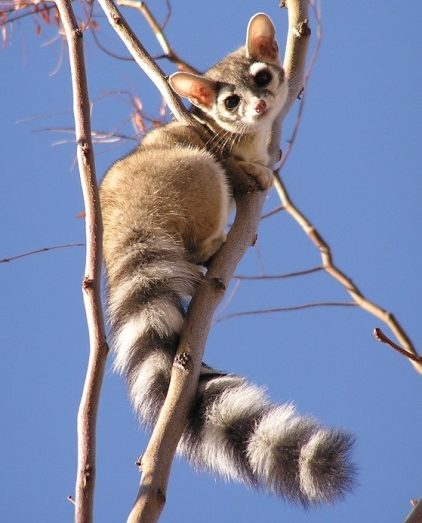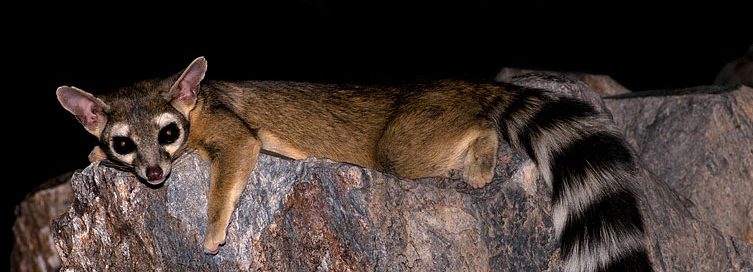
In honor of the adorably tiny ringtail observed at one of our recent wildlife camera stations, here's a little bit about ringtails about how they came to be known as the "miner's cat."
Often called a "ringtail cat", these mammals are actually members of the raccoon family and only distantly related to domestic cats. They are recognizable by their long, black and white striped tails and their small size (smaller than a cat). A ringtail's short, semi-retractable claws allow it to easily scamper up trees, and the species is known to nest in tree hollows. Although they are not especially uncommon, it's rare to observe them due to their nocturnal sleep pattern and their general wariness toward humans.
However, ringtails haven't always been shy around us. Accounts from gold rush miners in the early 1900s mention ringtails visiting Mother Lode cabins (these accounts can be found in Birds and Mammals of the Sierra Nevada, Sumner 1953). Ringtails' diets usually consist of rats, mice, insects, fruits, and seeds. So, as mice and rats began to invade miners' food storage, ringtails ventured closer to human dwellings to eat the rodents.
They quickly found that human habitations provided them shelter from predators and weather as well as an abundance of food. Some miners began putting out boxes near their wood stoves to give the ringtails a place to sleep in the daytime.

Another ringtail observed at one of our wildlife camera stations in 1998.

A piece of writing from 1942 recounts one spring when a ringtail gave birth several feet away, in a tent near Crystal Caves, to ringtail kittens three inches long. Accounts like these suggest significant trust between the semi-wild, semi-domesticated ringtails and the humans they interacted with.
In a similar manner to cat domestication, ringtails and gold rushers formed a mutually beneficial relationship. Although ringtails are no longer common around human residences, for a time they were tame enough to be referred to as "miner's cats".


